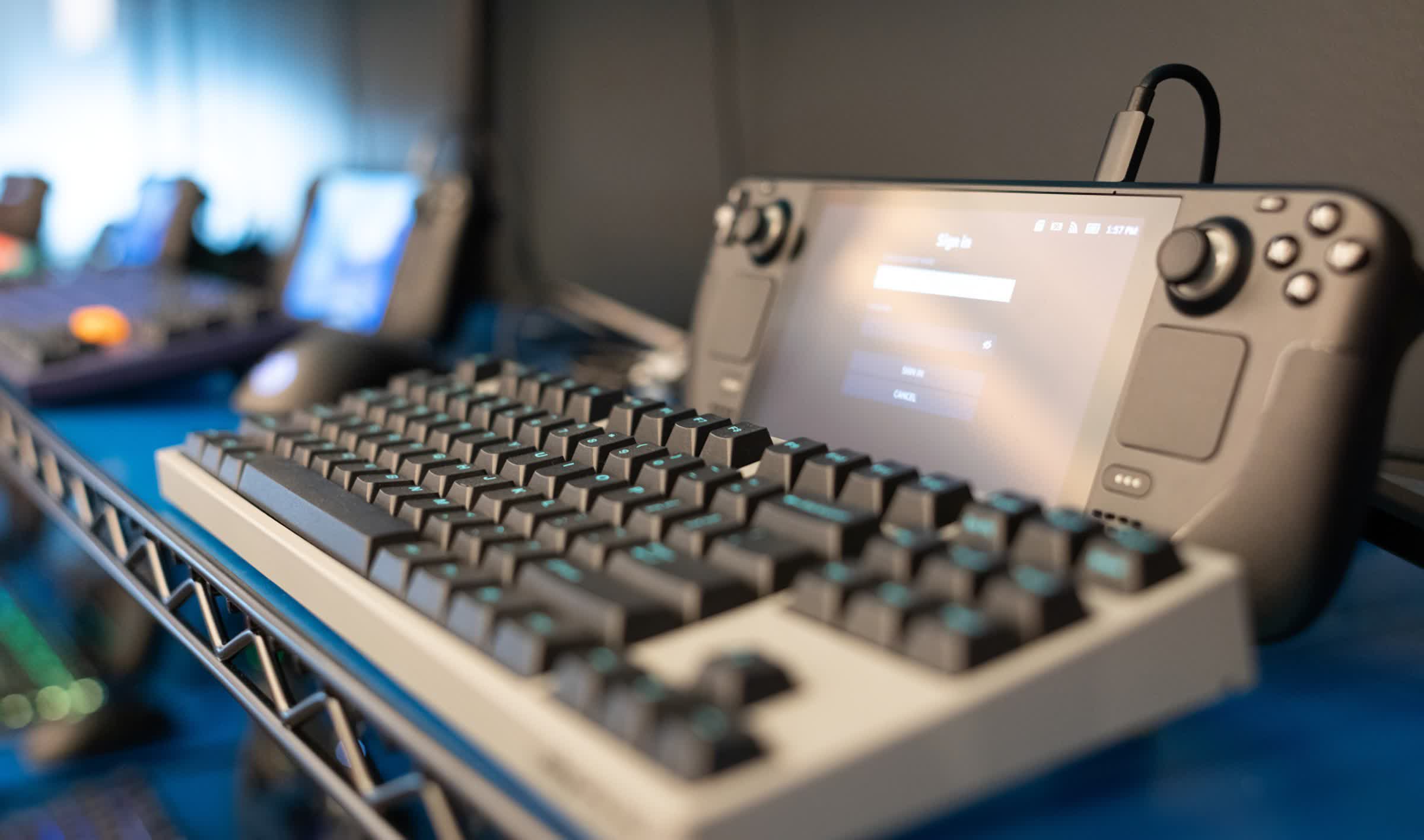Something to look forward to: The Steam Deck is shaping up to be the most exciting handheld console in years, even if many of you probably won't be able to get your hands on one until next year. Valve says it's targeting an 800p 30Hz experience in modern AAA titles, but judging by early developer kit reviews, you should be able to squeeze a lot more from it depending on how much eye candy you're willing to sacrifice.
Valve started shipping the first Steam Deck developer kits earlier this month, and since then things have been relatively quiet. However, thanks to an enthusiastic Chinese developer (via Tom's Hardware), we now have access to an early look at the hardware and software that makes the Steam Deck such an intriguing product. Granted, the commercial version will be more polished, so there will be differences when compared to the developer kit, especially in the performance department.

The Steam Deck is powered by a custom AMD APU that marries a Zen 2 processor with RDNA 2 graphics into a low-power system-on-a-chip. The CPU has four cores and eight threads that work at a base clock speed of 2.4 GHz and can go as high as 3.5 GHz if thermals allow it. The GPU has eight Compute Units (512 Stream Processors) that work at 1 GHz and can boost to 1.6 GHz when needed. The APU is backed by 16 gigabytes of LPDDR5-5500 RAM, which should be plenty for even the most demanding AAA titles.
Valve has chosen to equip the new handheld with a 7-inch LCD display that has a 16:10 aspect ratio and a resolution of 1280 by 800 pixels. This screen is limited to 60 Hz operation but you can theoretically get a 4K 120 Hz or 8K 60 Hz image when docked.

The Chinese developer tested four popular games using the default SteamOS 3.0 setup – Cyberpunk 2077, Shadow of the Tomb Raider, Doom, and DOTA 2. As expected, Cyberpunk 2077 is the toughest to run at a stable frame rate, and using the High preset will only net you around 20 to 30 frames per second with some occasional stuttering. This is a title where you'll want to use a Medium preset or a combination of Low and Medium settings to achieve 30+ frames per second, but the developer hasn't tested those scenarios.
In Shadow of the Tomb Raider, the Steam Deck was able to deliver 30 frames per second on average using the Highest preset, which is a decent result. Dropping down to High brings the average frame rate to 36 frames per second, and using a combination of Low, Medium, and High settings can yield a bit over 60 frames per second.
Doom is a bit easier to run, so using the Medium preset will net you around 60 frames per second on average. The Chinese developer also tried increasing visual fidelity in some areas which still resulted in a satisfactory 46 frames per second, but he didn't elaborate on what settings he changed for the second test run.

DOTA 2 is easily the least demanding of the bunch, running at an average frame rate of 47 frames per second on the highest preset. The developer says dropping all the way down to the low preset yields over 80 frames per second, so with a bit of tweaking you should be able to enjoy good visuals at 60 frames per second.
The developer says the Steam Deck does get a bit toasty under load, with temperatures on the rear of the device reaching over 42 degrees Celsius. The grips remain relatively cool, with a maximum recorded temperature of 29 degrees.
After spending around three hours playing games on the Steam Deck, the 40 Wh battery went from a 100 percent charge to just 46 percent. That said, this likely isn't indicative of what you'll get from the commercial version, as Valve and AMD are currently making good progress on a Linux driver that will improve performance-per-watt to a significant degree.
Overall, these performance results are in line with reports from other developers. For instance, Mike Rose from No More Robots says the downhill cycling game Descenders runs at 50 to 60 frames per second using the maximum graphics settings. And Microsoft Xbox boss Phil Spencer said last month that he'd been testing the Steam Deck with xCloud and found the experience excellent for fans of Xbox Game Pass.
Steamdeck update: Shock to no-one; this is a devkit. Second shock to no-one; Valve was clear that this was NOT for VR. Third shock to no-one: It will take time to understand what the capabilities are and how to optimize. This is about a potential future, not the right now. pic.twitter.com/AYOzN93c3r
--- Denny Unger @CloudheadGames (@DennyCloudhead) September 24, 2021
There are still a lot of unknowns at this point, but Valve has confirmed the Steam Deck can also be used as a PC controller. The company also says the handheld console will work with VR headsets, although it wouldn't go into any more details beyond shooting down unreasonable expectations of PC-like VR experiences.
That said, the Steam Deck appears to be a capable first-generation device. If all goes well, the handheld console will start shipping in December at a starting price of $399 for the base version with 64 gigabytes of eMMC storage. If you want more storage, Valve will charge you $529 for a Steam Deck with 256 gigabytes of NVMe storage and $649 if you want to double that.
